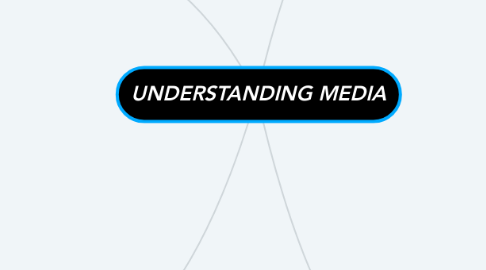
1. Aesthetics of New Media
1.1. Deconstructing New Media
1.1.1. New Media Technology: Convergence and Characteristics
1.1.2. New Media as Multimedia
1.1.3. New Media Transitions: from Synergy to Transmedia
1.2. Intersecting Traditional Media and New Media
1.2.1. Journalism + Internet = Blogging
1.2.2. Broadcasting + Internet = Podcast
1.2.3. Film + Internet = YouTube
1.3. Transitioning Media, Transitioning Users
1.3.1. Types of Audience Living in a Digital Age
1.3.1.1. Digital Native
1.3.1.2. Digital Immigrant
2. Aesthetics of Social Networking
2.1. Social Media
2.1.1. Kinds of Social Media and Its Varying Uses
2.1.1.1. Print-based
2.1.1.2. Audio-based
2.1.1.3. Photo-based
2.1.1.4. Video-based
2.1.1.5. Social Networking Sites
2.1.2. Relevance of Social Media in Today's Society
2.1.2.1. Personal Communications
2.1.2.2. Business and Customer Care Tools
2.1.2.3. Social Services and Governance
2.1.2.4. Educational Tools
2.1.2.5. Advocacy Campaigns for Social Change
2.1.2.6. Traditional Media Convergence and Social Media Enhancement
2.1.2.7. Entertainment Portals
2.2. Social Networking
2.2.1. "A supportive system of sharing information and services among individuals and groups having a common interest."
3. Aesthetics of Image, Text, and Audio
3.1. Framing and Reading
3.1.1. Newspaper and Journalism
3.1.2. Books, Comics, Magazines, and the Publishing Industry
3.1.3. Photography and Timeless Image Concepts
3.2. Framing and Listening
3.2.1. Radio and Evoking Imagination
4. Aesthetics of Film and TV
4.1. The Film Form
4.1.1. Formats of Length of Film
4.1.1.1. Short Film
4.1.1.2. Feature-length or full-length Film
4.1.2. Modes of Film Production
4.1.2.1. Preproduction Stage
4.1.2.2. Production Stage
4.1.2.3. Postproduction Stage
4.1.3. Film Formats
4.1.3.1. Narrative
4.1.3.2. Documentary
4.1.3.3. Animation
4.1.3.4. Experimental
4.1.4. Film Image Composition
4.1.4.1. The relationship of objects and people
4.1.4.2. The play of light and dark
4.1.4.3. The colors and their patterns
4.1.4.4. The position of the camera and the angles used to frame the subjects
4.1.5. Motion Framing Concepts
4.1.5.1. Camera movements
4.1.5.1.1. zoom
4.1.5.1.2. pan
4.1.5.1.3. dolly
4.1.5.1.4. focus
4.1.5.1.5. tilt
4.1.5.1.6. pedestal
4.1.5.1.7. truck
4.2. The TV Broadcast
4.2.1. Kinds of TV Shows
4.2.1.1. Informative Programming
4.2.1.2. Entertainment Programming
4.2.2. TV Show Anatomy and Advertising
4.3. Crafting Media Messages
4.3.1. Creating Meaning in Audio Production
4.3.2. Creating Meaning in Image Production
4.3.3. Creating Meaning in Audiovisual Production

